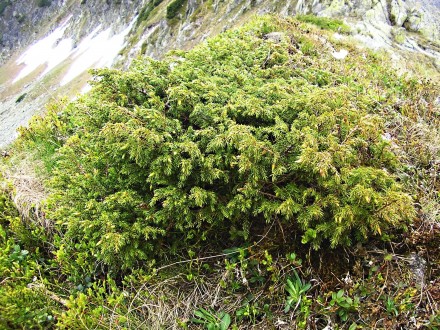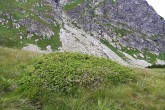(Juniperus sibirica Lodd.)
Habitus
- shrubby to recumbent tree up to 50 - 80 cm high
- morphologically similar to juniper
Leaves (assimilation organs)
- assimilation organs are needle-like in trifoliate spikelets (similar to juniper)
- but they are shorter, only 0.5 – 1.0 cm large (and they are also softer)
Flowers
- dioecious tree species (exceptionally monoecious
- flowers are morphologically similar to common juniper
Fruits – seeds
- the fruit is a cone berry, dark blue, sharpened, 5-9 x 5-6 mm in size (morphologically similar to the common juniper)
- ripens in the autumn of the second year, but also in the third year
Extension
- in Slovakia, it grows above the upper forest line in the zone of dwarf pine from 1,000 to 2,150 m above sea level (mainly the High and Low Tatras, Malá and Veľká Fatra
Ecology
- light-loving woody plants of a continental climate that tolerate extreme temperature fluctuations
- grows on a variety of substrates
Significance
- soil protection importance
- can also be used as an ornamental tree in glasses






















